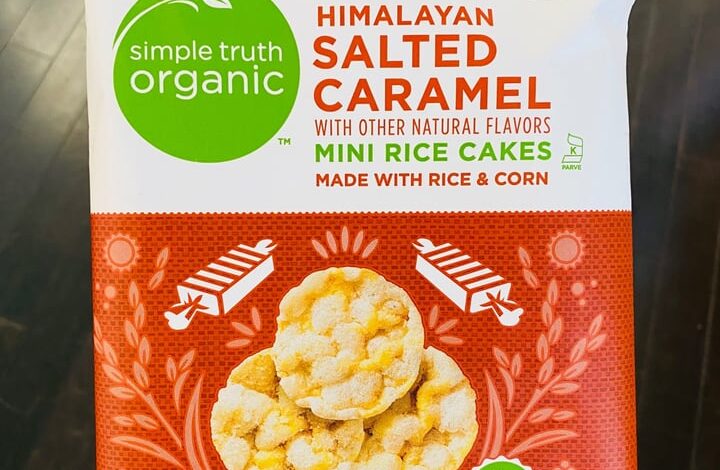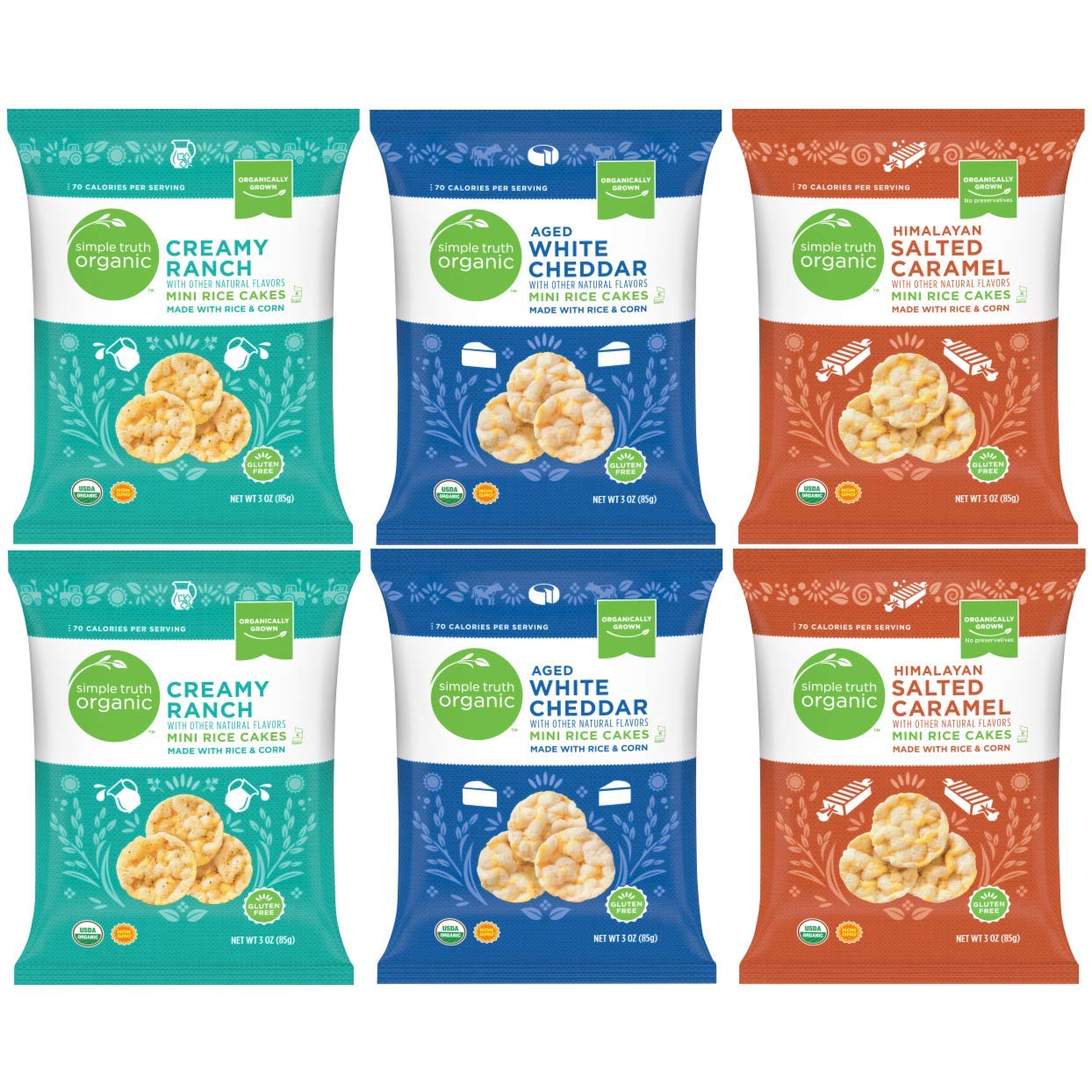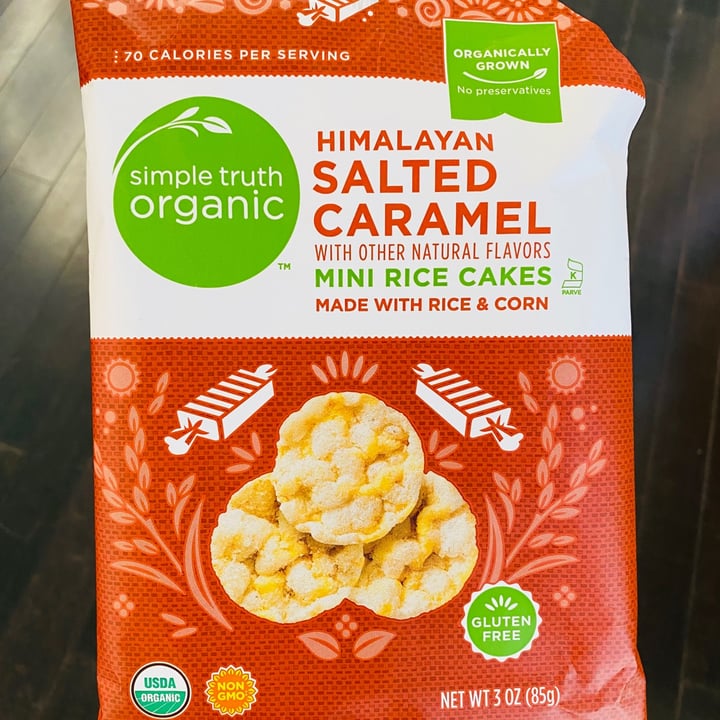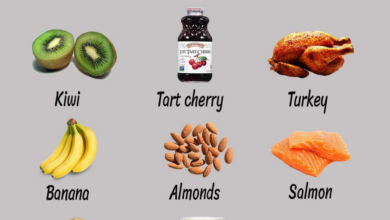
The Truth About Rice Cakes: Beyond the Hype
The truth about rice cakes: are they a healthy snack or a diet fad? You’ve likely heard the claims—they’re low in calories, good for weight loss, and a guilt-free way to satisfy your cravings. But is it all just hype?
Rice cakes have been a staple in various cultures for centuries, but their recent rise to fame as a diet food has sparked debate. Let’s delve into the history, nutritional value, and potential benefits and drawbacks of this popular snack.
From their humble origins in ancient Asian civilizations to their modern-day transformation into a diet staple, rice cakes have a fascinating story to tell. We’ll explore the evolution of their recipes, preparation methods, and cultural significance. But it’s not just about history; we’ll also dissect the nutritional content of rice cakes, compare them to other snack options, and uncover the truth about their impact on weight management and blood sugar levels.
Rice Cake Origins and History
Rice cakes, a simple yet versatile food, have a long and fascinating history, spanning across cultures and continents. These humble snacks have been a staple food for centuries, evolving with changing culinary practices and traditions.
Rice Cake Origins in Different Cultures
The origins of rice cakes can be traced back to ancient civilizations, where rice was a primary food source. In East Asia, rice cakes have been a cornerstone of culinary traditions for millennia.
- China:In China, rice cakes, known as “nian gao,” have been enjoyed for over 2,000 years. They are traditionally made with glutinous rice flour and often symbolize prosperity and good luck during the Lunar New Year.
- Japan:In Japan, rice cakes, called “mochi,” are a beloved delicacy, particularly during special occasions like weddings and festivals. They are made from pounded glutinous rice and can be enjoyed in various forms, from sweet to savory.
- Korea:In Korea, rice cakes, known as “tteok,” are an integral part of the cuisine, with numerous varieties and preparation methods. They are often served at ceremonies and celebrations, representing harmony and unity.
Evolution of Rice Cake Recipes and Preparation Methods
Over time, rice cake recipes and preparation methods have evolved, reflecting cultural influences and technological advancements.
- Traditional Methods:In ancient times, rice cakes were typically made by pounding rice grains into a paste, then shaping and steaming or baking them. This laborious process required significant effort and time.
- Modern Innovations:With the advent of modern technology, rice cake production has become more efficient and accessible. Rice mills and grinders have replaced manual pounding, while electric ovens and steamers have streamlined the cooking process.
Interesting Anecdotes and Legends
Rice cakes have been woven into folklore and legends throughout history.
“In Japanese folklore, mochi is believed to possess mystical powers, and its consumption is said to bring good fortune and longevity.”
Nutritional Value of Rice Cakes

Rice cakes have gained popularity as a low-calorie, low-fat snack option. However, their nutritional value is often debated. This section delves into the macronutrients and micronutrients present in rice cakes, comparing their nutritional profile to other popular snack choices. It also explores potential health benefits and drawbacks associated with their consumption.
Macronutrient Composition
Rice cakes are primarily composed of carbohydrates, with a minimal amount of protein and fat. A typical serving size of one rice cake (about 28 grams) contains approximately:
- Calories:35-40
- Carbohydrates:8-9 grams
- Protein:1-2 grams
- Fat:0.5-1 gram
The carbohydrate content in rice cakes comes mainly from starch, which provides a quick source of energy. The low protein and fat content contributes to their low calorie count.
Micronutrient Content, The truth about rice cakes
Rice cakes are generally considered a poor source of essential vitamins and minerals. However, they may contain small amounts of:
- Iron:0.5-1 milligram
- Thiamin:0.05-0.1 milligram
- Riboflavin:0.05-0.1 milligram
- Niacin:0.5-1 milligram
The micronutrient content of rice cakes can vary depending on the brand and ingredients used. Some manufacturers may add vitamins and minerals to their products.
Rice cakes, those crunchy, seemingly healthy snacks, often get a bad rap. While they might be low in calories, they’re also low in nutrients, leaving you feeling hungry and unsatisfied. But, if you’re looking for a way to boost your recovery after a tough workout, your post workout music has a big impact on your recovery , so maybe ditch the rice cakes and opt for a more nutritious snack paired with a motivating playlist.
It’s all about finding the right balance for your body and your mind.
Comparison to Other Snacks
Rice cakes often get compared to other popular snack options like potato chips, pretzels, and crackers. While rice cakes are lower in calories and fat than these alternatives, they are also significantly lower in protein, fiber, and essential vitamins and minerals.
| Snack | Calories | Protein (g) | Fiber (g) |
|---|---|---|---|
| Rice Cake (1 serving) | 35-40 | 1-2 | 0-1 |
| Potato Chips (1 serving) | 150-160 | 2-3 | 1-2 |
| Pretzels (1 serving) | 100-120 | 3-4 | 1-2 |
| Crackers (1 serving) | 80-100 | 2-3 | 1-2 |
Health Benefits of Rice Cakes
While rice cakes offer a low-calorie and low-fat option, their nutritional value is limited. However, they can be a part of a balanced diet in moderation. Some potential benefits include:
- Weight Management:Due to their low calorie and fat content, rice cakes can be incorporated into a weight-loss plan, especially when paired with nutritious toppings like hummus or avocado.
- Blood Sugar Control:The low glycemic index of rice cakes can help regulate blood sugar levels, making them a suitable snack for individuals with diabetes.
Drawbacks of Rice Cakes
Despite their perceived health benefits, rice cakes have some drawbacks:
- Low Nutritional Value:Rice cakes are primarily composed of carbohydrates, with limited protein, fiber, and essential vitamins and minerals. Therefore, they should be consumed in moderation and supplemented with other nutrient-rich foods.
- Potential for Overeating:The low calorie count of rice cakes can lead to overeating, as individuals may consume larger quantities without feeling full.
- Processed Food:Rice cakes are typically processed foods, often containing additives and preservatives. It’s essential to choose brands with minimal ingredients and avoid those with high sodium content.
The Truth About Rice Cakes as a Diet Food
Rice cakes have long been marketed as a healthy and low-calorie snack, often touted as a weight-loss miracle. But the truth is more nuanced, and their effectiveness as a diet food is often overstated. While rice cakes can be part of a balanced diet, understanding their true impact is crucial for making informed choices about your food intake.
Rice Cakes and Weight Loss: Separating Fact from Fiction
The common misconception surrounding rice cakes as a weight-loss tool is that they are inherently “low-calorie” and “low-carb,” making them a guilt-free snack. This is partly true, as a single rice cake typically contains around 30-40 calories and 8-10 grams of carbohydrates.
However, the key lies in how these calories and carbs impact your overall diet and satiety levels.
While rice cakes are low in calories, they are also low in nutrients and fiber. This means they provide little nutritional value and can leave you feeling hungry shortly after consuming them.
The lack of fiber and protein in rice cakes means they don’t promote a sense of fullness, making it easier to overeat. This can ultimately lead to consuming more calories than you would have if you had chosen a more nutrient-rich snack.
Impact of Rice Cakes on Blood Sugar Levels
Rice cakes, despite their low calorie count, are primarily composed of refined carbohydrates. This means they are quickly digested and absorbed, leading to a rapid spike in blood sugar levels. While this might seem appealing at first, it can lead to a subsequent crash in energy and an increased craving for more sugary foods.
Let’s be real, rice cakes are often touted as a healthy snack, but they’re basically just glorified cardboard. To get a real workout for your core, try this your 10 minute no equipment core workout – it’s way more satisfying than a few bites of dry rice cake! And if you’re looking for a truly satisfying snack, maybe reach for some fruit or a handful of nuts instead.
For individuals with diabetes or those trying to manage their blood sugar levels, consuming rice cakes frequently could negatively impact their overall blood sugar control.
A Sample Meal Plan Incorporating Rice Cakes for Weight Management
While rice cakes alone might not be the most effective weight-loss tool, they can be incorporated into a balanced diet as a part of a larger strategy. Here’s a sample meal plan that demonstrates how to incorporate rice cakes in a way that promotes healthy weight management:
- Breakfast:1 cup Greek yogurt with 1/2 cup berries and 1 rice cake topped with a tablespoon of almond butter. This provides protein, fiber, and healthy fats to keep you feeling full until lunch.
- Lunch:Salad with grilled chicken or fish, 1 cup of mixed greens, and 1 rice cake with a tablespoon of hummus. This combination offers protein, fiber, and healthy fats for sustained energy and satiety.
- Snack:1 rice cake with 1/4 cup of cottage cheese and a few slices of cucumber. This snack provides protein and fiber, while the cucumber adds volume and hydration.
- Dinner:4 ounces of grilled salmon, 1 cup of roasted vegetables, and 1 rice cake with a tablespoon of avocado. This meal provides protein, healthy fats, and fiber to support healthy blood sugar levels and promote satiety.
Remember, this is just a sample meal plan and should be adjusted based on your individual needs and preferences. Consulting with a registered dietitian can help you create a personalized plan that aligns with your specific health goals.
Rice Cake Varieties and Preparation Methods: The Truth About Rice Cakes
Rice cakes are not all created equal. While the basic concept remains the same
- puffed rice
- the variations in ingredients, textures, and flavors are surprisingly diverse. This variety allows for a wide range of applications, from simple snacks to creative culinary creations.
Types of Rice Cakes
The types of rice cakes available are influenced by the ingredients used, the processing methods, and the desired texture. Here are some popular varieties:
- Plain Rice Cakes:These are the most basic form, made primarily from puffed brown rice or white rice. They are often low in calories and fat, making them a popular choice for weight management.
- Brown Rice Cakes:These are made from whole brown rice, which provides additional fiber and nutrients compared to white rice. They tend to have a slightly nutty flavor and a firmer texture.
- Multigrain Rice Cakes:These cakes are made from a blend of rice and other grains, such as oats, quinoa, or millet. This adds additional flavor and nutrients, creating a more complex flavor profile.
- Sweet Rice Cakes:These cakes are made from sticky rice or glutinous rice, which provides a chewy texture and a slightly sweet flavor. They are often flavored with sweeteners or spices.
- Savory Rice Cakes:These cakes are made from rice and other ingredients, such as cheese, herbs, or spices. They offer a savory flavor and can be enjoyed as a snack or a side dish.
Nutritional Value and Flavor Profiles
The nutritional value and flavor profiles of rice cakes can vary significantly depending on the brand and ingredients. Here is a comparison of some popular brands:
| Brand | Ingredients | Calories per Serving | Fat (g) | Carbohydrates (g) | Fiber (g) | Flavor Profile |
|---|---|---|---|---|---|---|
| Quaker Rice Cakes | Brown rice, salt | 100 | 0.5 | 23 | 1 | Mild, nutty |
| Lundberg Rice Cakes | Brown rice, salt | 110 | 1 | 25 | 2 | Slightly sweet, nutty |
| LUNA Rice Cakes | Brown rice, quinoa, flaxseed, chia seed, sunflower seeds, salt | 120 | 2 | 24 | 3 | Nutty, slightly sweet |
| Wasa Rice Cakes | Brown rice, whole grain rye, salt | 130 | 2 | 26 | 4 | Savory, slightly tangy |
Creative Rice Cake Preparations
Rice cakes are a versatile canvas for culinary creativity. While they are often enjoyed with simple toppings like peanut butter or cheese, there are many other ways to prepare and enjoy them. Here are some ideas:
- Savory Spreads:Experiment with hummus, guacamole, pesto, or spicy chili paste.
- Sweet Treats:Top with fruit, nut butter, and a drizzle of honey or maple syrup.
- Mini Pizzas:Spread with tomato sauce, add cheese, and bake until melted.
- Breakfast Bites:Top with avocado, scrambled eggs, or smoked salmon.
- Crunchy Croutons:Toast rice cakes and use them as croutons for salads.
- Rice Cake Breadcrumbs:Crush rice cakes into breadcrumbs and use them for coating chicken or fish.
Rice Cakes in Different Cultures
Rice cakes, in their diverse forms, have long been a staple food in numerous cultures worldwide, reflecting the ingenuity and adaptability of human culinary traditions. These humble yet versatile treats hold significant cultural and culinary significance, showcasing the diverse ways in which rice, a fundamental grain, has been transformed and incorporated into culinary practices across the globe.
Rice Cakes in East Asia
Rice cakes are a cornerstone of East Asian cuisine, with distinct variations and cultural interpretations found in countries like Japan, Korea, and China. In Japan,
- mochi* is a popular rice cake made from glutinous rice, often enjoyed during special occasions like New Year’s.
- Mochi* is typically pounded into a sticky, chewy texture and can be served in various ways, from grilled with sweet fillings to incorporated into savory dishes.
In Korea,
We’ve all been told rice cakes are a healthy snack, but the truth is, they’re often just empty calories. To build muscle, you need to focus on protein and proper nutrition, and sometimes that means looking beyond the obvious “healthy” choices.
You might be surprised to learn about the 6 sneaky ways you might be losing muscle , so make sure you’re fueling your body right, and ditch those rice cakes for a more nutrient-dense snack!
- tteok* encompasses a wide range of rice cakes, each with its unique flavor and texture.
- Tteok* is often served during festivals and special events, with varieties like
- songpyeon*, a half-moon shaped cake filled with sesame seeds, and
- injeolmi*, a chewy rice cake coated in roasted soybean powder, representing culinary traditions and cultural significance.
China, too, boasts a rich history of rice cakes, with
- nian gao*, a steamed glutinous rice cake, holding symbolic importance during Chinese New Year.
- Nian gao* represents prosperity and good fortune, often served as a sweet treat or incorporated into savory dishes.
Rice Cakes in Southeast Asia
Southeast Asia is another region where rice cakes are deeply ingrained in culinary traditions, with variations found in countries like Vietnam, Thailand, and Indonesia. In Vietnam,
- banh xeo*, a savory rice crepe filled with ingredients like shrimp and bean sprouts, is a popular street food.
- Banh xeo* is often served with dipping sauces and reflects the region’s unique blend of flavors and textures.
Thailand is known forkhao niew ma muang*, a sweet rice cake dessert made from sticky rice and mango. This dish is a popular treat, especially during the mango season, and showcases the harmonious combination of sweet and savory flavors characteristic of Thai cuisine.In Indonesia,
- ketupat*, a diamond-shaped rice cake made from glutinous rice wrapped in woven palm leaves, is a staple food often served during special occasions like Eid al-Fitr.
- Ketupat* is typically served with savory dishes, adding a unique texture and flavor to the meal.
Rice Cakes in South Asia
Rice cakes are also prevalent in South Asia, with variations found in countries like India, Pakistan, and Sri Lanka. In India,
pitha*, a broad category of rice cakes, encompasses a wide range of varieties, from savory to sweet, each reflecting regional culinary traditions.
In Pakistan,
- halwa puri*, a savory rice cake often served with a sweet and savory lentil stew, is a popular breakfast dish.
- Halwa puri* is typically enjoyed during special occasions and represents the cultural diversity of Pakistani cuisine.
Sri Lanka boasts a unique rice cake called
- kiribath*, a plain white rice cake often served with curries and sambals.
- Kiribath* is a staple food in Sri Lankan cuisine, often enjoyed during special occasions and representing the country’s rich culinary heritage.
Rice Cakes in Africa
Rice cakes are also found in African culinary traditions, with variations found in countries like Ghana, Nigeria, and Senegal. In Ghana,
- kenkey*, a fermented rice cake wrapped in corn husks, is a staple food often served with soups and stews.
- Kenkey* represents the ingenuity and resourcefulness of Ghanaian cuisine, showcasing the transformative power of fermentation in culinary traditions.
In Nigeria,
- fufu*, a pounded yam or cassava dough often served with soups and stews, is a staple food. While not strictly a rice cake,
- fufu* shares a similar texture and cultural significance with rice cakes in other parts of the world.
Senegal is known for
- thieboudienne*, a national dish consisting of rice cooked in a fish broth with vegetables.
- Thieboudienne* showcases the use of rice as a base for savory dishes, reflecting the culinary creativity and resourcefulness of Senegalese cuisine.
Rice Cake Presentations and Cultural Significance
| Region | Rice Cake | Presentation | Cultural Significance |
|---|---|---|---|
| East Asia | *Mochi* (Japan) | Pounded, chewy, often grilled or served with fillings | Celebratory food, especially during New Year’s |
| East Asia | *Tteok* (Korea) | Various shapes and textures, often served during festivals | Represents culinary traditions and cultural significance |
| East Asia | *Nian gao* (China) | Steamed glutinous rice cake | Symbol of prosperity and good fortune during Chinese New Year |
| Southeast Asia | *Banh xeo* (Vietnam) | Savory rice crepe, often filled with shrimp and bean sprouts | Popular street food, reflecting the region’s culinary blend |
| Southeast Asia | *Khao niew ma muang* (Thailand) | Sweet rice cake dessert, made from sticky rice and mango | Popular treat, especially during mango season |
| Southeast Asia | *Ketupat* (Indonesia) | Diamond-shaped rice cake, wrapped in palm leaves | Staple food, often served during special occasions |
| South Asia | *Pitha* (India) | Wide range of varieties, from savory to sweet | Reflects regional culinary traditions |
| South Asia | *Halwa puri* (Pakistan) | Savory rice cake, often served with lentil stew | Popular breakfast dish, enjoyed during special occasions |
| South Asia | *Kiribath* (Sri Lanka) | Plain white rice cake, often served with curries | Staple food, representing the country’s culinary heritage |
| Africa | *Kenkey* (Ghana) | Fermented rice cake, wrapped in corn husks | Staple food, showcasing the ingenuity of Ghanaian cuisine |
| Africa | *Fufu* (Nigeria) | Pounded yam or cassava dough, often served with soups | Staple food, sharing cultural significance with rice cakes |
| Africa | *Thieboudienne* (Senegal) | Rice cooked in fish broth with vegetables | National dish, showcasing the use of rice in savory dishes |
Rice Cakes: A Sustainable Snack Option

Rice cakes, often touted as a healthy snack choice, also hold a place in sustainable food choices. Their production and consumption contribute to a more environmentally friendly approach to snacking, particularly when compared to other processed snacks.
Rice Cakes: A Sustainable Snack Option
The environmental impact of rice cake production is significantly lower than many other popular snack foods. This is due to the relatively simple ingredients and processing methods involved. Rice, the primary ingredient, is a staple crop grown in many parts of the world and can be produced sustainably.
- Reduced Carbon Footprint:Rice cake production requires less energy and resources compared to snacks with complex ingredients or extensive processing. This translates to a lower carbon footprint, contributing to reduced greenhouse gas emissions.
- Minimized Packaging:Rice cakes are often packaged in simple, recyclable materials, further reducing the environmental impact. Choosing brands that utilize recycled and compostable packaging options can enhance the sustainability of your snack choice.
- Less Waste:Rice cakes are generally less prone to spoilage compared to snacks containing perishable ingredients, leading to reduced food waste. This minimizes the environmental burden associated with food production and disposal.
Rice cakes can play a crucial role in promoting sustainable food choices. They offer a healthy and environmentally conscious alternative to processed snacks that often involve extensive resource utilization and generate substantial waste.
Choosing Eco-Friendly Rice Cake Brands and Packaging
When selecting rice cakes, prioritize brands that prioritize sustainability in their practices. Consider these factors:
- Organic Rice:Opt for brands using organic rice, as it promotes sustainable farming practices that minimize pesticide and herbicide use.
- Recyclable and Compostable Packaging:Look for packaging made from recycled materials or those that are compostable, minimizing the environmental impact of packaging disposal.
- Local Sourcing:Supporting brands that source rice locally reduces the environmental impact associated with transportation.
- Fair Trade Certification:Choose brands with Fair Trade certification, ensuring ethical and sustainable sourcing practices that benefit farmers and communities.
Closing Summary

Rice cakes, like any food, deserve a nuanced understanding. While they can be a part of a balanced diet, it’s crucial to remember that they are not a magical weight-loss solution. Their versatility allows for creative preparation and integration into diverse culinary traditions.
Ultimately, the truth about rice cakes lies in informed choices and a balanced approach to eating.






